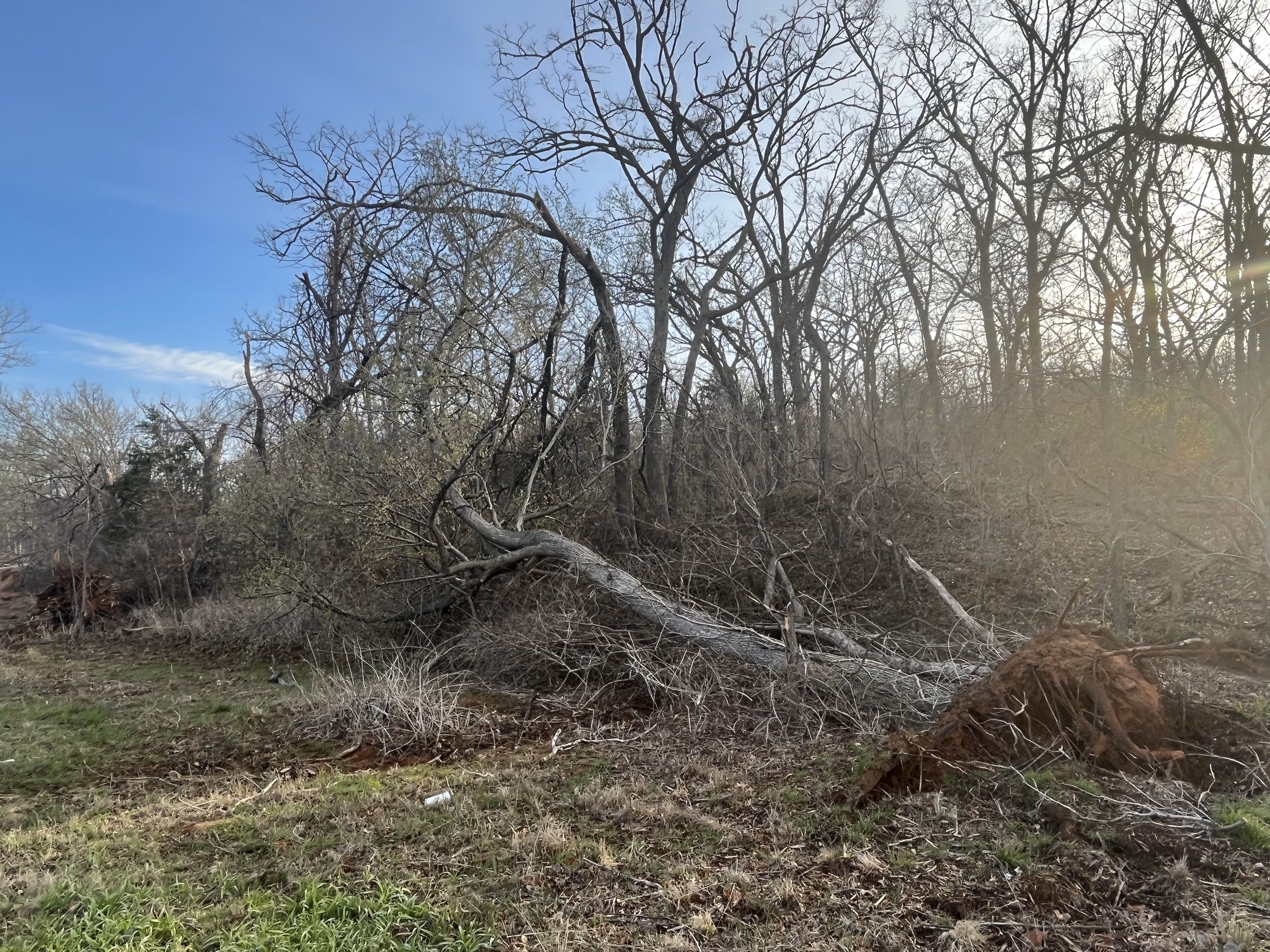Harbinger of Spring
The once familiar road has debris stacked 10 feet tall on either side now, intermittently, for more than half a mile. But oddly enough, that’s not what makes it look like somewhere I’ve never been. It’s the space behind the piles of twisted metal and uprooted trees that looks so foreign. I never knew how the land laid underneath the structures and the growth. This stretch of 60th street in east Norman was composite in my mind.
Now it’s piecemeal.
About three weeks ago, an EF2 tornado popped out of the sky and hopscotched its way diagonally across the section lines. It left a wake of devastation and destruction—the kind pictures don’t do justice--the kind you have to walk within to feel. Some homes were destroyed, many others were badly damaged, and the landscape in between was twisted and gnarled in all the places where the ground was not wiped clean. The street I took for granted will never be the same.
Tornadoes are the strangest of storms. They move unpredictably, as if by whim, as they pick and choose what they wish to take with them on their way. Along the quarter mile line of demarcation of this particular storm, scrub oaks stand snapped like toothpicks, their jagged edges poking up like weapons from the earth. From a random electric line, a wire hanger still sways in the wind, while the roots of a hundred-year-old oak tree lay exposed next to the hole where they were ripped out of the ground. Wads of stuff—both man and God made—line the shoulders of the road as the tedious efforts of clean up and recovery continue around the clock.
Last week it was Mississippi. An EF4 ripped through the town of Rolling Fork, killing 25 and counting. The video footage shown on TV was almost too difficult to view. Before that it was Alabama… and Texas… and in 2013 it was just 20 miles north up the interstate in Moore. It’s impossible to comprehend the trauma and the loss at the hands of a violent tornado unless you’ve lived it. And the closer it is to you, the greater the damage seems. Normalcy changes in the blink of an eye and suddenly nothing looks like anything you recognize anymore.
The place you stand is different as is what you see.
Every time I drive through the quarter mile swath, just a half mile from my home, my heart feels heavy. I ache for the bald landscape, the broken fences, the tar paper roofs and boarded windows, and the see-through yards that used to be encased by soaring trees. I miss what was—the order of it all and the familiarity--and I wonder where and how the people start to try to start again.
“It could have been worse,” so many have said. “Perhaps,” I think each time I hear it, “unless of course the home that’s gone was yours.” Perspective lands and lives in context.
Today as I passed through the alien war zone, a giant elm tree that had been uprooted by the twister caught my eye. It was lying like a corpse-- exactly where the twister laid it--with all its limbs intact, parallel to the side of the road. But today it was laced in green. Delicate, serrated, pointy tipped leaves had popped out all over the sprawling branches, despite the fact that the root ball no longer lived in the ground. This enormous specimen, newly severed from its life source, had enough juice saved up in its system to fuel a final show.
In the midst of the massive carnage rose a harbinger of spring.
From a distance, it’s not hard to see the path the tornado took. These freaks of nature have sharp edges that surgically slice the land. And up close when you’re inside it, the mown down track feels eerie, like it might always be a reminder of how quickly life can change.
The sides of 60th street where the scrub oaks once fought for light and life will never be like they were. However, new vegetation will take hold and grow filling the unfamiliar landscape once again with life. Homes will be rebuilt. Fences and power lines will be repaired. What’s damaged, bent, and broken will soon be cleared away.
Spring will take over. As the stubborn fighter tree reminds us, renewal is on the way.
P.S. “I’ll Regret This Forever!”

